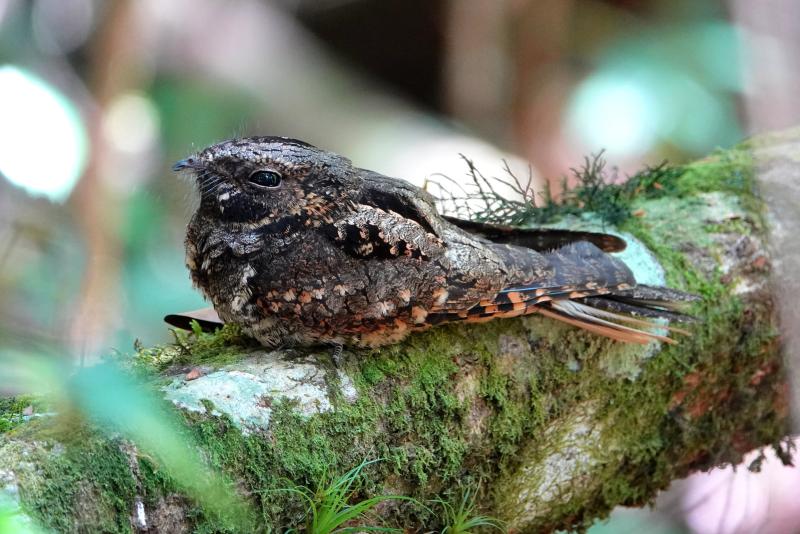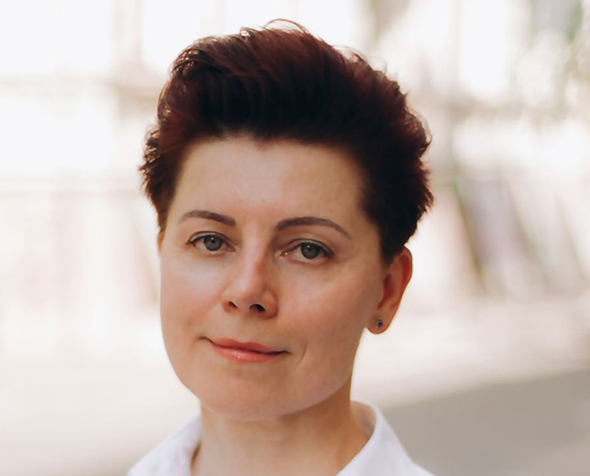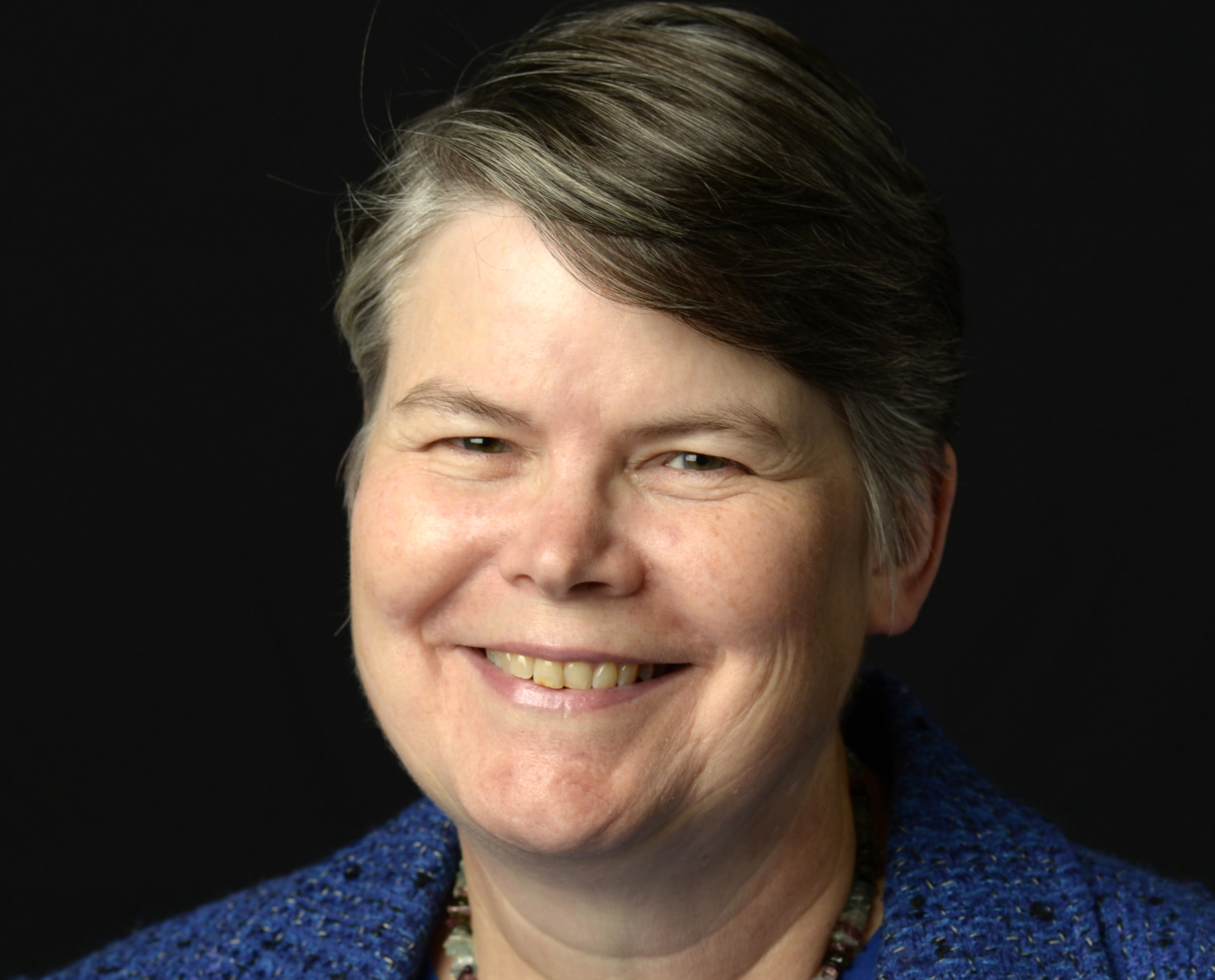CAHSS Professor Shares Grounding Benefits of Birding Amid Climate Change

Whip-poor-wills and other members of the nightjar family have experienced profound declines over the last 40 to 50 years.
More than a decade ago, a radio program about climate change altering the migratory patterns of birds captured Jared Del Rosso’s imagination, igniting a passion for exploring the world of birding.
Then teaching at the University of New Hampshire while finishing his PhD in sociology at Boston College, he sought out a birder colleague who introduced him to species like the Green Heron — hiding in plain view just outside the door.
“It was eye-opening that there were these birds that were living in the same area that I’d grown up in and never even knew were there,” said Del Rosso, now an associate professor at the University of Denver’s College of Arts, Humanities & Social Sciences (CAHSS).
Seeking to offset years of intense work on a dissertation surrounding the politics of torture during the Bush administration, the budding interest bloomed into a full-blown hobby that accompanied him to DU when he joined the Department of Sociology & Criminology as a faculty member in fall 2012.
As a birder in urban Denver as well as a sociologist teaching on cultural sociology, social theory, criminology theory and theories of violence, Del Rosso became captivated by “the ways we think about the animals we live with, and how animals interact with human landscapes and people.”
He channeled that fascination into an intensive, interterm course on urban wildlife, working with students in the field in nearby venues such as City Park and the High Line Canal. The more he taught the course and delved into the role of animals in society, the more deeply he dove into bird watching.
Transforming a Hobby into Social Research
While ruminating on topics for his next writing project following the publication of his book Denial: How We Hide, Ignore, and Explain Away Problems last year, Del Rosso wanted to explore “something psychically and emotionally very different” after COVID.
“I wanted something that wasn’t steeping me in violence, steeping me in the denial of social problems. The idea of writing something to do with culture and birds — specifically the Whip-poor-will — all coalesced for me,” he said.
The bird appealed not just because he’d grown up on the east coast in Whip-poor-will territory, but also because he wanted to engage deeply with another species endowed with cultural symbolism amid climate change and the decline of that species.
“Many, maybe most bird species are experiencing pretty steep and dramatic population declines as a result of climate change, the loss of habitat, the overuse of pesticides, the increase in invasive plants,” he said.
The Whip-poor-will and other members of the nightjar family have experienced profound declines over the last 40 to 50 years, according to Del Rosso. “We’re losing that bird. What does it mean to be attached to a species at a time where our relationship to the environment and the environment itself is so precarious?”
The quest to answer that question propels his current book in progress tentatively titled “The Lonesome Whip-poor-will: The Cultural History of America’s Most Meaningful Bird,” for which Del Rosso recently signed a book contract with NYU Press.
The title borrows from the opening lines to the Hank Williams’ song, “I’m so Lonesome I Could Cry,” a reference to the bird.
“In country music, there’s a lot of invoking the Whip-poor-will to symbolize a lost place and way of life, particularly rural life,” Del Rosso said. “The bird in the Hank Williams song is so connected to the human response of loneliness that connects directly to nostalgia,” a subject central to the book and, in some ways, to birding itself.
Del Rosso believes the theme speaks to our increasing unease in the places we’re connected to that we no longer recognize, “either because of disasters that climate change causes or the altering of natural rhythms, things blooming too early or too late, the loss of those anchors,” he said.
The book will also examine a rich legacy of folklore and superstitions related to Whip-or-wills and other nightjars. The first Whip-poor-will signaled a time to plant corn and, for children, time to go barefoot, for example. Because they sing repetitively through the night, the first Whip-poor-will “was also said to tell you how many years you would live,” Del Rosso explained.
On the dark side, previous generations also perceived night birds such as Whip-poor-wills as omens of death and Whip-poor-wills likewise figure as potent symbols in horror fiction. “Steven King invoked Whip-poor-wills in some of his stories, such as ‘Salem’s Lot,’ and the horror writer H. B. Lovecraft relied on them pretty dramatically in ‘The Dunwich Horror,’” Del Rosso said.
Restoring a Connection to the Natural World through Birding
Del Rosso encourages students, colleagues and staff interested in deepening their relationship with the environment to give birding a try. All you need is a set of binoculars and a field guide, he said.
On campus, the conifer trees by Mary Reed Hall often have Black-capped Chickadees, House Finches and Red-breasted Nuthatches, especially in late autumn and winter. Northern Flickers, “a large and striking woodpecker,” can be found year-round, especially in the cottonwood trees near Anderson Academic Commons, according to Del Rosso.
Red-tailed Hawks often perch high on top of the Lamont School of Music and the Coors Fitness Center year-round, and in autumn and winter, American Crows congregate in Denver’s parks along University Avenue “sometimes gathering in the hundreds,” Del Rosso said. “At dusk, they’ll start flying down University, and they often vocalize as they pass over DU, gliding and drifting toward their overnight roosting spots.”
“Students often tell me they see a Great Horned Owl on campus,” he added. “They start calling to establish territories and attract mates in winter, so it’s a particularly good time to listen for these birds at dawn and dusk.”
He recommends visiting nearby Washington Park in late autumn when ducks and geese fill the ponds and you can often find a few heron species, “all of which are easier to spot than small songbirds which are incredibly fast and can disappear before you even get your binoculars to your eyes,” Del Rosso said.
Birding requires only a little patience and willingness to sit or walk outside quietly and absorb what you’re seeing, learning to identify what birds look and sound like, how they behave, what trees and plants they favor.
For digital guides, Del Rosso recommends the free Merlin Bird ID app from Cornell’s ornithology lab that can identify bird songs and photos through a smart phone. He cites experiencing a sense of grounding in an ever-shifting world as birding’s greatest ongoing benefit.
“When you visit a particular area regularly you begin to know the birds at various times of year, the plants and trees they like to visit and get a real sense of the rhythm of that place,” he added. “You begin to notice when those rhythms are upended and really think about how to restore them.”
Del Rosso occasionally leads birdwatching trips with Denver Field Ornithologists www.dfobirds.org and the High Line Canal Conservancy www.highlinecanal.org.






